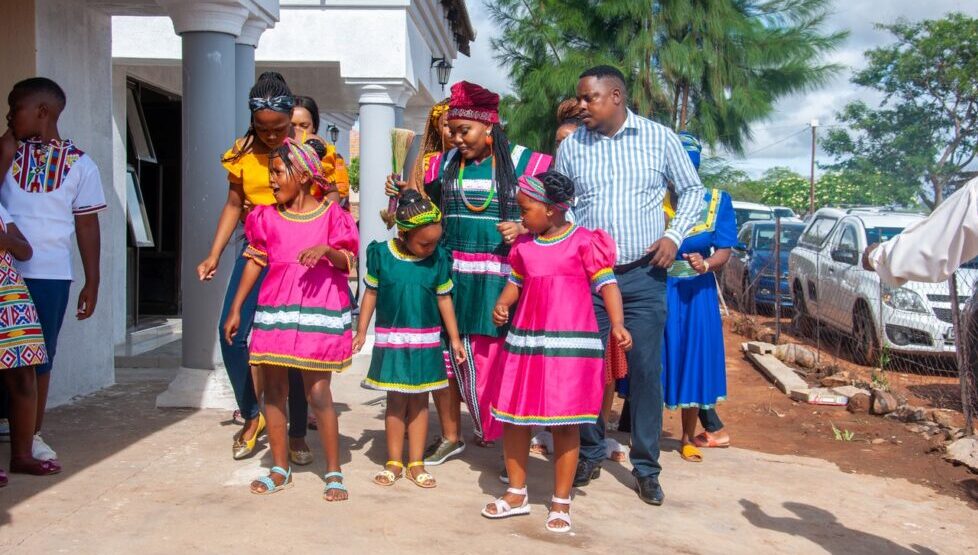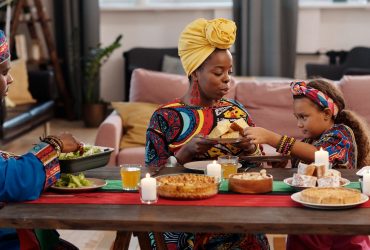Currently Empty: R0.00
Fabric and Politics, a Comprehensive Guide.

The meaning behind traditional African clothes in the political sphere
The meaning behind Traditional African clothes may vary depending on a group of people’s culture, national past experiences, colonial struggles and more.
Let’s take for example the Xhosa outfit (A tribe from Eastern Cape – South Africa); their womenswear and jewelry showcase their life stages. A newlywed girl wears a specific headgear; a different style than someone with a first child, and so on.
But as for EFF (A South African Political Party) their red overall is a radical political statement. According to Zach Goldhammer on his article “The Coded Clothes of South Africa Economic Freedom Fighters”, the jumpsuits are meant to express solidarity with the country’s domestic workers and manual laborers. Their red color represents a connection not only to communist parties past, but also to the blood of laborers, including 34 platinum miners who were massacred by police in Marikana in 2012.
Therefore the clothing worn by politicians tends to send a much deeper message. In fact, the type of clothing a politician wears can say a lot about their country’s culture, struggles, past experiences, and values.
A few different types of traditional African clothes and their meaning
Shweshwe (South African Popular Traditional Cloth) the local name shweshwe is derived from the fabric’s association with Lesotho‘s King Moshoeshoe I, also spelled “Moshweshwe”. Moshoeshoe I, was gifted with the fabric by French missionaries in the 1840s and subsequently popularized it.
Shweshwe is traditionally used to make dresses, skirts, aprons, and wraparound clothing. Shweshwe clothing is traditionally worn by newly married Xhosa women, known as makoti, and married Sotho women among others.
Capulana – Spelled Kapulana (Mozambican Popular Traditional Cloth) also called Nguvu or Vemba in Shangana – is an apron that is mainly worn in Mozambique, but is also available in other parts of southeast Africa. It is a material length of approximately 2 meters by 1 meter. It can be used as a wrap dress, or as a baby sling. It also counts as a complete garment.
In Mozambique, capulana often wear headscarves and tailored shirts. They are used in a variety of ways, including everyday casual wear, carrying heavy loads, and even bespoke for special occasions. Capulana’s early heritage colors and styles are highly sought after and are now on the market at higher prices. In Mozambique, they have a high status and are considered particularly beautiful.
Retso (Zimbabwean Popular Traditional Cloth) also called Jira reRetso, is typically red in color with black and white geometric patterns; in their belief, this fabric represents the spirit of hunters, those who bring something to their families. In Shona, it always has been very important to always have a way of showing your appreciation to the hunter when he comes home with their catch.
Chitenje (Malawian Popular Traditional Cloth) is said to be the most and well recognized African Fabric Cloth in Southern Africa region, originally from Indonesia, and has found its path to Africa where most popular fashion designers welcomed it for inexpensive clothing, dresses, shirts, skirts, hats, and even for occasional clothes.
Chitenje in Malawi is mostly used by women to wrap around their chest and waist, also as a headscarf or a baby sling. It is by no doubt a part of their political life and cultural values.
Leteise (Botswana Popular Traditional Cloth) like all other African countries Botswana is composed of many different tribes, but among all other traditional clothes, Leteise also called Letoitse is the most widely worn cultural fabric.
This fabric can be seen in casual everyday settings but is essential for more traditional weddings and other cultural celebrations observed in the country. Women from Lesotho and Xhosa from Eastern Cape-South Africa also use Leteise as a cultural fabric – but they call it Shweshwe in Sotho and Ujamani in Xhosa. The most popular color for this traditional cloth is Indigo.
Ohorokova (Namibian Popular Traditional Cloth) is a bold, A-lined, floor-length dress with colorful, vibrant patterns worn with several petticoats underneath, creating a wide, structured dress. The dress is topped off with a beautiful cow horn-shaped headdress, called Otjikaiva.
It was introduced by German missionaries’ wives and colonialists in the early 1900s it served a good purpose of covering bare-breast African women who used to wear leather aprons made from animal skins to cover only their back and front.
Like any other traditional African Clothes, it then gained popularity among the people of Namibia who can now use it mainly for special occasions like weddings, funerals and to also observe special holidays and celebrate their cultures.
The significance of the colors used in traditional African clothes worn by politicians
As we mentioned before colors have deep meaning in African traditional clothing compared to any other outfit.
Red: it represents tension in the political or spiritual world and is considered the color of blood.
Gold: is a very popular color as it represents wealth and fertility.
Blue: represents peace and love. It symbolizes the sky and has harmonious colors.
White: purity and spirituality.
Green: is a medicinal color representing prosperity and life.
Black: represents grief and sorrow.
In conclusion, it is always best to deeply apply your thoughts when selecting your African print fabric for public appearances and others. We have a great collection of African print fabric from which many fashion designers, companies political parties, royal families depend for their stunning outfits.


Famous Celebrities Dressed on African Fabric Clothes | Fabric Store | Labi
[…] are many beautiful and unique African fabric clothes materials and colors that are popular among the continent’s celebs. Some of the most common and well-known ones […]